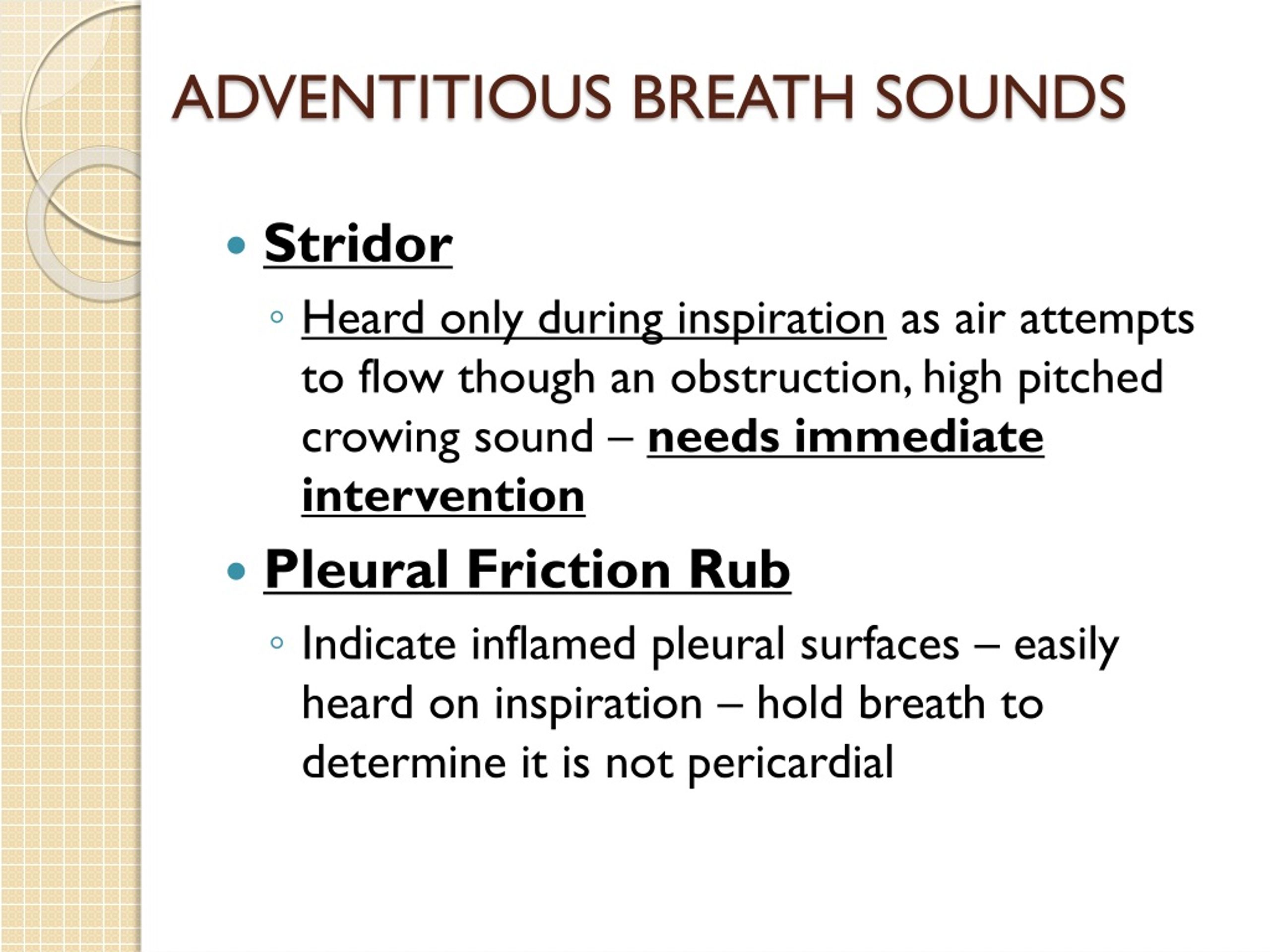
pleural effusions/pulmonary fibrosis).įinger clubbing involves uniform soft tissue swelling of the terminal phalanx of a digit with subsequent loss of the normal angle between the nail and the nail bed. Joint swelling or deformity: may be associated with rheumatoid arthritis which has several extra-articular manifestations that affect the respiratory system (e.g.asthma, COPD, interstitial lung disease).
5 adventitious breath sounds skin#

Fluid balance: fluid balance charts will give an indication of the patient’s current fluid status which may be relevant if a patient appears fluid overloaded or dehydrated.Vital signs: charts on which vital signs are recorded will give an indication of the patient’s current clinical status and how their physiological parameters have changed over time.Mobility aids : items such as wheelchairs and walking aids give an indication of the patient’s current mobility status.Cigarettes or vaping equipment: smoking is a significant risk factor for lung cancer and chronic lung disease (e.g.inhalers/nebulisers in asthma/COPD), catheters (note volume/colour of urine) and intravenous access.


Oxygen delivery devices: note the type of oxygen device (e.g.Look for objects or equipment on or around the patient that may provide useful insights into their medical history and current clinical status: lung cancer) and other end-stage respiratory diseases (e.g. Cachexia is commonly associated with underlying malignancy (e.g. Cachexia: ongoing muscle loss that is not entirely reversed with nutritional supplementation.Pulmonary oedema often occurs secondary to left ventricular failure. ascites) and is often associated with right ventricular failure. Oedema: typically presents with swelling of the limbs (e.g.It should be noted that healthy individuals may have a pale complexion that mimics pallor. haemorrhage/chronic disease) or poor perfusion (e.g. Pallor: a pale colour of the skin that can suggest underlying anaemia (e.g.Stridor has a wide range of causes, including foreign body inhalation (acute) and subglottic stenosis (chronic). Stridor: a high-pitched extra-thoracic breath sound resulting from turbulent airflow through narrowed upper airways.Wheeze is often associated with asthma, COPD and bronchiectasis. Wheeze: a continuous, coarse, whistling sound produced in the respiratory airways during breathing.

A dry cough may suggest a diagnosis of asthma or interstitial lung disease.
5 adventitious breath sounds full#
The inability to speak in full sentences is an indicator of significant shortness of breath. Shortness of breath is a common feature of most respiratory pathology, however possible underlying diagnoses in an OSCE could include asthma, pulmonary oedema, pulmonary fibrosis, lung cancer and COPD.


 0 kommentar(er)
0 kommentar(er)
